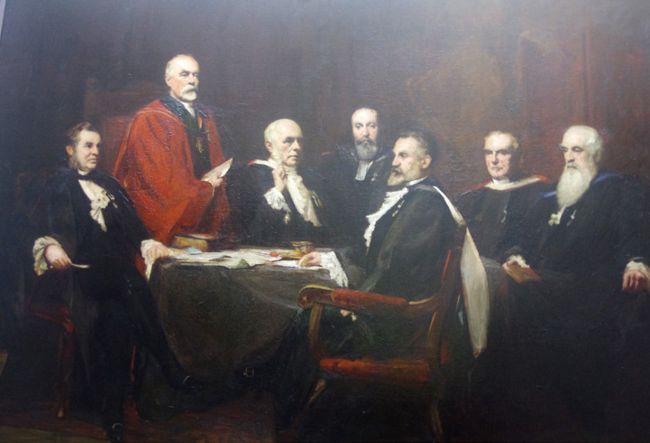COVER
Assembly Hall art
Jackie Macadam discovers some of the artwork in and around the General Assembly Hall in Edinburgh.

Assembly Hall art
FEW people who have walked through the arch into the Quadrangle at New College in Edinburgh have failed to be impressed by the grand façade of the General Assembly Hall and its supporting rooms.
The gothic architecture, the spires, the arched windows – there can be no doubt that it is one of the most iconic buildings in Edinburgh’s skyline.
Founded as a result of the Disruption of 1843, New College was established to allow the Free Church of Scotland to educate future ministers and under the first Principal, Thomas Chalmers, 168 students were admitted. Work on the present building (which includes the Assembly Hall) started in 1846.
Once inside, one of the things that stands out particularly is the black and white corridor and the busts of a variety of figures who have played their part in the history of the Church Of Scotland. But one of the key features of New College is the artwork.
Moments of church history adorn the walls, along with faces of former Moderators.
Among the warren of corridors and rooms there is an abundant wealth of paintings, some small, some large but all celebrating an important part of the history of the Church.
The staircase which leads to the Moderatorial room is covered in portraits and photographs of former Moderators continuing up to the Clerk’s Room, two landings above.
The Moderator’s chambers consist of an outer and an inner room and both are decorated with portraits of former Moderators.
A beautiful stained-glass window generally offers light as you enter the Moderator’s rooms, but the extension to the entrance of the whole Assembly Hall building meant that the view of the window has been covered by stonework.
“People have their own favourite paintings,” said Ros Taylor, from Tod and
Taylor architects who care for the building. They regularly inspect the paintings and the buildings and keep up to date with the condition of the artwork.
One of the most popular paintings is that of the Rev James Robertson, who was Chaplain to the Forces from 1884 – 1904. It’s different from most of the others in that he is portrayed in his khaki army greatcoat rather than his ministerial garb. There’s a solemn presence about the painting, by Ogilvy Reid, that draws the eye, and makes it stand out.
Three of the most interesting pieces are in the South West Stairs. Rather than paintings, they are photo-montages, and are unique records of previous church assemblies. Records of The Ministers of the United Presbyterian Church Synod (1889), The Last General Assembly of the Free Church of Scotland (1900) and the Last Synod of the United Presbyterian Church (1900), they are very big and striking pieces. Some of the faces are beginning to lift and there is a general paling of the images, but the detail, the idea that you are actually looking, not at an artist’s reproduction, but at the actual faces of the people involved, is impressive and fascinating.
“Moments of church history adorn the walls, along with faces of former Moderators. Among the warren of corridors and rooms there is an abundant wealth of paintings, some small, some large but all celebrating an important part of the history of the Church.
One of my favourites is tucked away in the Inner North Corridor and is a painting of Queen Victoria’s Chaplains dated 1901 by John Bowie. It’s plush, it’s elegant and there is a nobility and an earnestness about the work, though it is feeling the ravages of time.
Opposite it is the General Assembly being addressed by Field Marshal Earl Haig of Bemersyde KT. There’s a quiet intensity about the painting, painted by Robert Hope, and memorialising the occasion, in 1919, when Haig spoke to the gathered commissioners.
There are so many beautiful works of art in the Assembly Hall that it’s impossible to go through each individually. But maybe, next time the doors are open to us all again, it might be worth pausing for just a moment to look at the walls instead of scurrying to find a seat in the Hall.